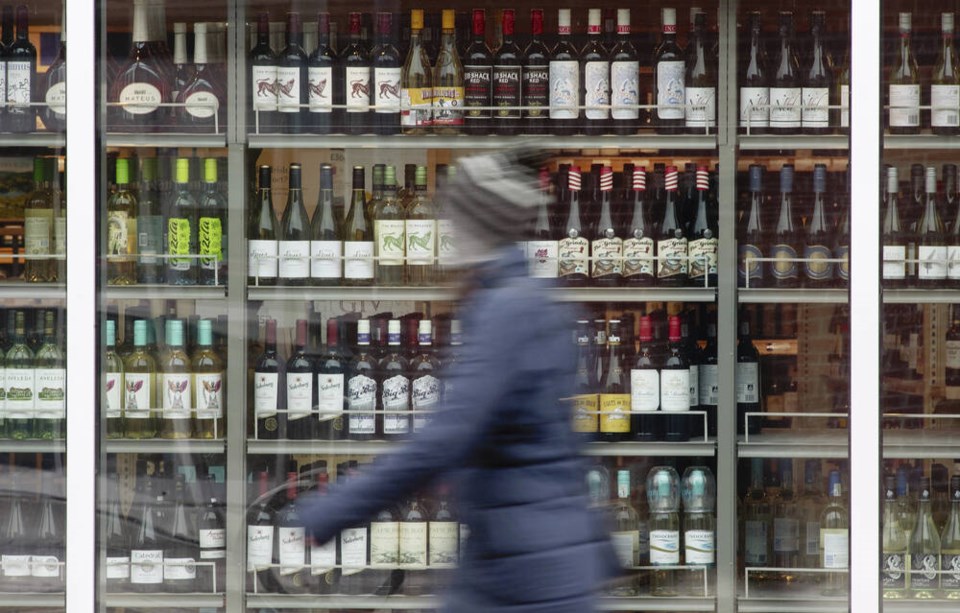It’s been about 10 years since Dry January first took off as a public health campaign.
British charity Alcohol Change UK launched the initiative in 2012, adopting the concept first proposed in 2008 by a New York businessman.
During Dry January, people commit to avoiding or reducing their alcohol intake for the month.
Alcohol Change UK says the aim is to change the conversation about alcohol, encourage people to consider and discuss their alcohol consumption, and support behaviour change for improved mental and physical health.
Several Canadian health organizations support the concept here at home, including the Canadian Cancer Society, the Heart and Stroke Foundation of Canada, the Canadian Mental Health Association, Mothers Against Drunk Driving, and others
Last year’s campaign was marked by the timely release of the Canadian Centre on Substance Use and Addiction’s updated guidelines for low-risk drinking.
The report’s main conclusion was that less alcohol intake is better. Four committees — including three scientific expert panels — looked at existing studies on alcohol and health issues and used several data sources, including death and disability data for 2017 to 2019 from Statistics Canada, to calculate and model the risks of drinking how much and how often.
The research shows that alcohol consumption in Canada is linked to preventable deaths, including deaths due to cancer, and preventable hospital admissions every year. In addition, about 42 per cent of Canadians who drink alcohol drink it at a level that comes with serious health risks.
The guidelines drop the recommended maximum number of weekly servings of alcohol to two, down from six noted in Health Canada’s current guidelines, set in 2011.
The recommendations are based on the findings that health risks are negligible or low with just two or fewer glasses of wine per week, moderate with three to six standard alcohol servings a week, and increasingly high with more than six servings per week.
The report also defines a serving — how much beer, cider, wine or spirits makes up a serving of alcohol.
Today, one year on and despite what was reported in many media outlets worldwide, Canada’s official low-risk alcohol guidelines remain those put in place 12 years ago.
Health Canada is looking at updating the official federal guidelines. The standard process for that involves investing in and reviewing the latest research — which the 2023 report is part of — and consulting with stakeholders.
The beverage and hospitality industries, which obviously have a lot at stake when it comes to health guidelines for drinking, are among those who have a seat at the table during consultations. As spokespeople for these industries point out, these businesses employ Canadians, pay taxes and support the country’s economy.
Statistics Canada reports that the federal and provincial governments earned more than $13.6 billion from alcohol sales in 2021/22.
More restrictive drinking guidelines would affect the bottom lines of Canadian wineries, breweries, distilleries, and the downstream businesses that distribute and sell their products. As such, they should be looped into any potential changes to Health Canada’s recommendations so that they can prepare.
Of course, the annual costs of alcohol use are also enormous. In 2020, the Canadian Institute for Substance Use Research, here in Victoria, and the Canadian Centre on Substance Use and Addiction estimated the impacts of alcohol use on health care, crime and lost productivity on Canadian society to be $22.4 billion.
That’s the economics. The social costs are also huge.
So despite the industry’s $13.6-billion tax contributions, the interests of the many other parties affected by health policy — in this case, the doctors, nurses, ambulance drivers, hospital administrators, families, and individuals whose lives and businesses are impacted directly and indirectly by the negative effects of alcohol use — must be the priority.
Health policy and health-related guidelines should be based on scientific evidence, with the aim of protecting and furthering greater public good.
Besides which, health guidelines are just that — they’re recommendations, not requirements. People will apply them — or not.
But the more we know about the risks of engaging in an activity, the more we can make informed decisions and choices about it.
We may, for example, choose to not drink at all this January or to drink a bit less year round.
>>> To comment on this article, write a letter to the editor: [email protected]




